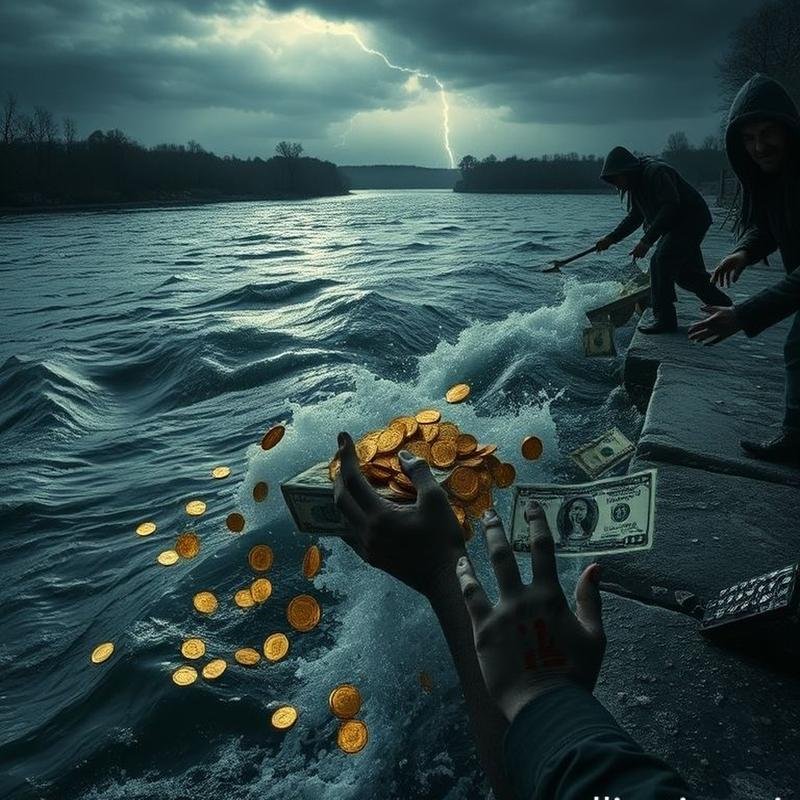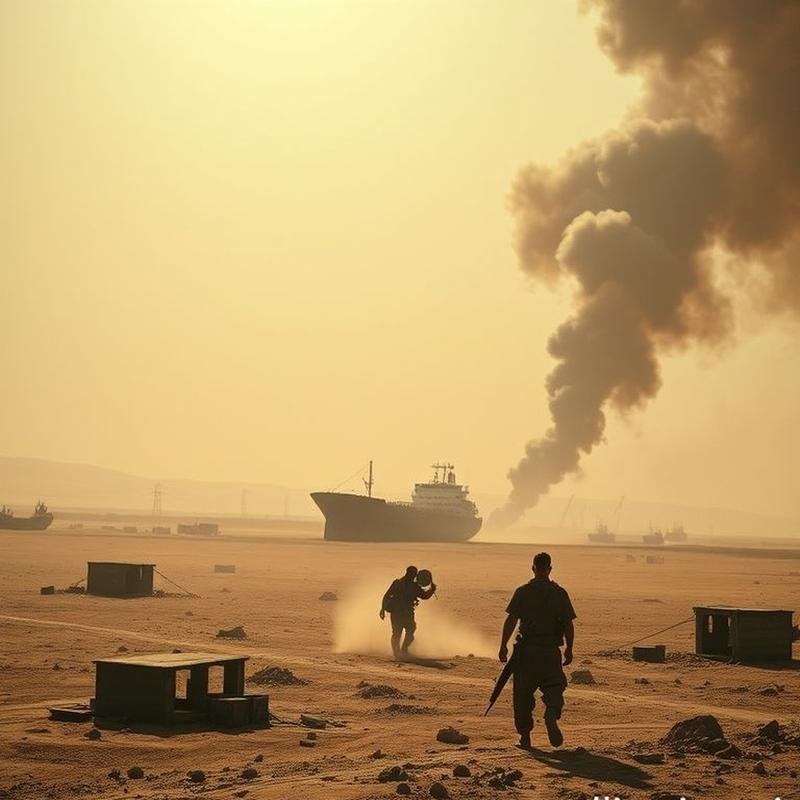Shadow Economy Practices: Extremist Financing of Terrorism

Extremism’s Financial Lifeline: A Clandestine Alliance
The shadows conceal not only vast wealth but also the very lifeblood that sustains extremist ideologies. Envision a world awash in billions of illicit dollars, flowing unchecked, circumventing international safeguards, and fueling agendas of terror and destabilization. The UN estimates this clandestine flow of money at a staggering 2 to 5 percent of global GDP – a torrent into which extremist groups eagerly immerse their bloodstained hands.
The Modus Operandi: Funding Terror
Consider ISIS, which amassed a horrifying fortune from seized territories through brutal taxation, merciless extortion, and the clandestine sale of stolen oil. Hundreds of millions of dollars, channeled through the shadows, directly empowered their brutal reign of terror. Then there’s Hawala, an ancient system built on trust, now a modernized conduit for illicit funds. Devoid of paper trails and traditional banking infrastructure, it relies on a handshake and a sprawling network that spans continents, moving money stealthily beyond the reach of international authorities. Charities, ostensibly dedicated to benevolent causes, are also frighteningly vulnerable to exploitation, their noble facade masking a darker, more sinister purpose. The Tri-Border Area remains a notorious haven where money vanishes only to reappear, funding clandestine activities. Even the digital frontier offers sanctuary; cryptocurrency’s inherent anonymity serves as a siren song to those seeking to operate with complete opacity. The stakes are impossibly, terrifyingly high.
Hawala: Trust as a Conduit for Terror
Hawala, an ancient network predicated on trust rather than legal frameworks, facilitates the movement of funds across continents through personal relationships, bypassing banks and leaving no digital audit trail. Rooted in personal relationships, its transactions are nearly impossible to trace, existing entirely outside the purview of formal contracts. A commission of merely 0.5% to 2% makes it tantalizingly attractive. However, behind its veil of convenience lurks a chilling reality. The Golden Chain, Al-Qaeda’s ledger, revealed Hawala’s crucial role in funding terror in the 1990s. Operation Green Quest exposed millions flowing to Al-Qaeda through these very channels. Even with post-9/11 regulations and FATF recommendations, the earlier collapse of BCCI exposed the inherent vulnerabilities of these systems to exploitation. Hawala remains a shadowy artery, pumping lifeblood into the veins of extremism.
Cryptocurrency: A Digital Shadow
A new shadow emerges: cryptocurrency. In 2021, a staggering $14 billion in cryptocurrency surged into illicit addresses, a 79% increase from the previous year. The allure of anonymity, though often a mirage, has drawn extremist groups to these digital waters. Hamas, since 2019, openly solicits Bitcoin donations, their tactics evolving to create unique addresses for each transaction – a digital game of cat and mouse. In 2020, the U.S. Department of Justice seized millions from al-Qaeda, Hamas, and ISIS-linked entities, undeniable proof that this is not theoretical. While a 2018 CNAS study suggested crypto’s use was still limited, the volatility and traceability that once deterred them are now being overcome. Europol warns that privacy-centric cryptocurrencies like Monero and Zcash further obscure these already murky transactions.
Shell Corporations: Facades of Deceit
From digital shadows to phantom entities, the trail relentlessly continues. Shell corporations: legal in appearance, yet hollow in substance. Mere facades, erected to conceal the insidious flow of illicit funds. The Financial Action Task Force rightly identifies them as a key tool for those who thrive in the darkness. The Panama Papers offered a fleeting glimpse behind the curtain, revealing how firms like Mossack Fonseca brazenly facilitated the creation of these shields for criminals and, chillingly, organizations linked to terror. Hezbollah, masked by a labyrinth of shell companies, launders drug money to fuel its deadly operations. The 2015 indictment by the U.S. Department of Justice exposed a staggering $150 million scheme, with Iran’s Bank Melli cleverly circumventing sanctions through these paper-thin constructs. Europol’s Operation Archimedes reveals a vast network of these entities used to launder criminal proceeds from drug trafficking and human smuggling across Europe. Nominee directors, silent shareholders… layers upon layers of calculated deception. Each shell represents a dead end, a frustrating obstruction deliberately placed to thwart investigators attempting to untangle the complex web. For every dollar frozen, ten more surge through the system, unseen, untouchable, mocking justice. The ingenuity of the criminals keeps relentless pace, leaving law enforcement perpetually playing catch-up in this frustrating game.
The Art World: A Canvas of Crime
From drug trafficking and human smuggling across Europe, the shadow economy’s tendrils extend into the most unexpected corners, even the hallowed halls of the art world. Interpol estimates that a staggering $6 to $8 billion changes hands annually in the illicit art market. Behind the veneer of prestige and cultural appreciation lurks a darker truth: this world is a haven for money laundering and, sickeningly, terrorist financing. UNESCO reports that looted cultural objects are now a primary source of funding for extremist groups. ISIS, at its peak, reportedly amassed a staggering $100 million from selling antiquities plundered from the blood-soaked soils of Syria and Iraq. Imagine a mosaic, brutally ripped from Syrian soil, seized in Memphis, its sale destined to fund unspeakable terror. The art market’s inherent opacity is its most valuable asset, providing perfect camouflage for criminals. Shell companies conceal ownership, while freeports offer sanctuary for illicit treasures, shielding them from scrutiny. The Financial Action Task Force has repeatedly flagged the art world’s vulnerability, yet enforcement of crucial treaties like the 1970 UNESCO Convention remains tragically uneven. The result? A masterpiece, not of artistic brilliance, but of calculated deceit, a testament to the shadow economy’s insidious and infuriating power.
Trade-Based Money Laundering: Deception in Transit
From shell companies to freeports, the shadow economy provides perfect camouflage for extremist groups seeking to fund their dark agendas. But the rabbit hole plunges deeper. Consider trade-based money laundering: a staggering 80% of illicit financial flows globally, according to the UNODC, course through this deceptive channel. Picture containers brimming with electronics, their value deliberately inflated, secretly funneling funds to terrorist organizations like Hezbollah, as exposed by the U.S. Treasury. Or dual-use goods, disguised as civilian commodities, covertly financing extremist operations while brazenly bypassing international sanctions. ISIS, as revealed by RUSI, manipulated the gold trade in conflict zones, weaving a complex web of deceit to move funds across borders with impunity. Even seemingly innocuous practices like mirror trading can be twisted into potent tools of terror finance. This isn’t mere financial crime; it’s a clear and present danger, demanding immediate and coordinated global action to expose and dismantle these insidious networks before they further destabilize our world.
Illuminating the Shadows: A Path Forward
The shadows, though daunting, are not impenetrable. While FATF estimates terrorism-linked money laundering as merely a fraction of global illicit finance, its impact remains catastrophic. The IMF’s research underscores a critical truth: weak governance breeds vulnerability. But awareness is empowering; knowledge is paramount. UN Security Council Resolution 2462 urgently demands stronger national laws and seamless international cooperation. The Panama Papers, a stark revelation, exposed the very architecture of secrecy, revealing pathways that we can now resolutely target. CTED emphasizes the power of public-private partnerships, sharing vital intelligence and building firewalls together, brick by brick. We can disrupt Hawala networks, especially in regions lacking formal banking infrastructure, as meticulously identified by FATF. We draw inspiration from exposing ISIS’s staggering $500 million oil revenue stream, proving that we can stop them. By illuminating these dark corners, we fortify our defenses and safeguard the future of our global community, fostering a future of hope and security for all.
Conclusion
In conclusion, the shadow economy, with its intricate web of deceit and anonymity, serves as a critical lifeline for extremist groups, enabling them to finance their operations and spread their ideologies. From exploiting vulnerabilities in the global financial system to leveraging emerging technologies like cryptocurrency, these groups are adept at adapting to the ever-changing landscape of illicit finance.
Having unveiled how extremist groups exploit the shadow economy’s anonymity and complexity to fund their operations, highlighting specific methods and vulnerabilities in the global financial system, what innovative solutions can we, as a global community, implement to effectively combat this shadowy threat and ensure a more secure and transparent financial future?










